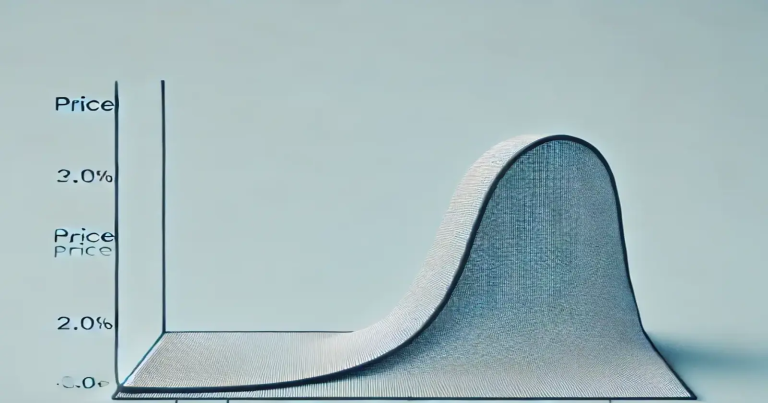Elasticity of demand tells us how much the demand for a product will increase or decrease when there is a change in its price or in consumer income. This concept is one of the most essential tools in economics. especially for businesses and policymakers, to understand consumer behavior and market dynamics. For Indian students preparing for exams or business professionals making pricing decisions, understanding the elasticity of demand is critical.
What is Elasticity of Demand?
The elasticity of demand captures the responsiveness of the demand for a good when the price, or the income, changes. The most prevalent one is price elasticity of demand, but there are also income elasticity and cross elasticity.
Significance of Elasticity of Demand
First, before we get into the technical details, you may be wondering why this concept is so important:
- Helps businesses set prices
- Assists governments in taxation decisions
- Enables economists to understand market behavior
- Useful for consumer behavior prediction
Types of Elasticity of Demand
There are several types of elasticity, each helping to understand demand changes from different angles. This section gives a broad explanation of each.
Price Elasticity of Demand (PED)
Price Elasticity of Demand (PED) is a key concept in economics that measures how the quantity demanded of a good or service changes in response to a change in its price. In simpler terms, it shows how sensitive consumers are to price changes. It helps businesses and governments understand consumer behavior, set pricing strategies, and forecast revenue.
Formula:
| Price Elasticity of Demand=% change in quantity demanded / % change in price |
Types of Price Elasticity:
- Perfectly Elastic: Demand changes infinitely with price change.
- Elastic (>1): A small price change leads to a larger change in demand.
- Unitary Elastic (=1): Price and demand change equally.
- Inelastic (<1): Demand changes little even if price changes.
- Perfectly Inelastic (=0): Demand remains constant regardless of price.
Example (India-specific):
If onion prices increase by 20% and demand falls by 40%, the PED is
−40% / 20% = −2 (Elastic)
Application in Business:
- If demand is elastic, lowering price increases total revenue.
- If demand is inelastic, raising price increases total revenue.
Income Elasticity of Demand (YED)
Income Elasticity of Demand (YED) measures how the quantity demanded of a product changes when a consumer’s income changes. It shows how sensitive consumer demand is to changes in income, keeping other factors constant. This concept is vital in understanding consumer behavior, classifying goods, and planning production, especially during economic growth or downturns. This shows how demand changes with consumer income levels.
Formula:
| Income Elasticity of Demand=% change in quantity demanded / % change in income |
Types:
- Positive YED (>0): Normal goods, demand increases with income.
- Negative YED (<0): Inferior goods, demand decreases with income.
- Zero YED (=0): Demand doesn’t change with income.
Indian Examples:
- Normal goods: Branded clothes, electronics.
- Inferior goods: Bajra, local transport.
Cross Elasticity of Demand (XED)
This refers to the responsiveness of demand for one good when the price of another related good changes. Cross of demand (XED) measures how the quantity demanded of one good changes in response to a price change of another related good. It is a key concept in economics that helps understand the relationship between goods — whether they are substitutes or complements.
Formula:
| Cross Elasticity of Demand=% change in quantity demanded of Good A% / % change in price of Good B |
Types:
- Substitute Goods (XED > 0): Tea & Coffee.
- Complementary Goods (XED < 0): Petrol & Cars.
Use Case:
If coffee becomes costlier, tea demand may rise in India due to substitution.
Factors Affecting Elasticity of Demand
The factors affecting elasticity of demand explain why some products see big drops in sales when prices go up, while others don’t change much at all. Various factors influence how elastic or inelastic a product’s demand is. Let’s look at the key ones.
1. Nature of the Good
- Necessities: Inelastic (e.g., medicines, salt)
- Luxuries: Elastic (e.g., air conditioners)
2. Availability of Substitutes
- More substitutes = Higher elasticity.
- Fewer substitutes = Lower elasticity.
3. Proportion of Income Spent
- Expensive goods (cars, gold) = Elastic
- Cheap goods (matchsticks, pens) = Inelastic
4. Time Period
- Short term: Inelastic
- Long term: More elastic due to adaptability
5. Brand Loyalty
- High brand loyalty makes demand inelastic.
Practical Applications of Elasticity of Demand
Elasticity is not just theory; it has real-life applications in different sectors. Indian students should understand these examples for exams and interviews.
1. Government Policies
- Taxation: Taxes are imposed on inelastic goods to raise revenue.
- Subsidies: Provided for goods with elastic demand to boost consumption.
2. Business Pricing Strategies
- Elastic demand: Reduce prices to boost volume.
- Inelastic demand: Increase prices to raise profit.
3. Agriculture and Farmers
- In India, demand for grains is inelastic. Even when prices fall, farmers may not be able to sell more.
4. Public Transport vs. Private Transport
- In urban India, metro services show inelastic demand due to limited substitutes.
Elasticity of Demand FAQs
Q1. What does elasticity of demand mean?
Elasticity of demand measures how much demand changes when price or income changes.
Q2. What is the price elasticity of demand formula?
It is: % change in quantity demanded ÷ % change in price.
Q3. Why is elasticity important for businesses?
It helps set prices to maximize profit and predict consumer behavior.
Q4. How does income affect demand?
As income rises, demand for normal goods increases and for inferior goods falls.
Q5. What are examples of elastic and inelastic goods?
Elastic: Branded jeans, smartphones
Inelastic: Milk, insulin
Q6. What is cross elasticity of demand?
It shows how demand for a good changes when a related good’s price changes.
Q7. What is the elasticity of petrol in India?
It is inelastic since people can’t easily switch to alternatives.
Q8. Which elasticity type helps in subsidy planning?
Income elasticity of demand helps governments decide where subsidies are needed most.
Q9. Can demand be perfectly inelastic?
Yes, for life-saving drugs, demand stays constant despite price changes.
Q10. What makes luxury goods highly elastic?
Because they are not essential, buyers postpone buying if prices rise.


